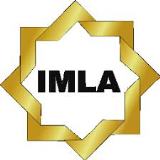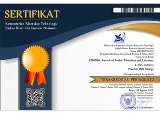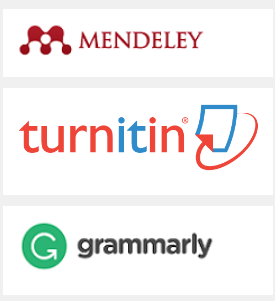Development of Vocabulary Learning Videos to Improve Students' Motivation and Understanding of Arabic Vocabulary
DOI:
https://doi.org/10.18326/lisania.v8i2.208-226Keywords:
Learning Videos, Arabic Vocabolary, Students' MotivationAbstract
This research is motivated by the low motivation to learn Arabic and understand vocabulary at the elementary level. This study aims to produce a product in the form of vocabulary learning videos and describe its feasibility in increasing learning motivation and understanding of Arabic vocabulary. The type of research is research and development. The research data from the results of the validation of material and media experts, limited field tests assessing the language learning motivation, and effectiveness of Arabic vocabulary learning videos. The data collection technique uses observation and questionnaires. The results of the research are: (1) the product was developed in the form of learning video media to increase learning motivation and understanding of Arabic vocabulary at the beginner level. This product contains images that symbolize the meaning of words. This product presents one learning theme, natural scenery, consisting of nine vocabularies. This product also contains exercises to help students understand Arabic vocabulary. (2) The product feasibility from both material and media experts is good. The results of limited field tests of the product use are excellent, while the pilot test for student motivation is high. Therefore, this medium is valuable and should be used in learning.
References
Adiawaty, S., Oci, M., Siminto, S., & Ermindyawati, L. (2023). Adaptive strategies for 21st century learning: Digital literacy and learning outcomes in contemporary Indonesian higher education. International Journal of Teaching and Learning, 1(2), 115-127.
Arifin, M., & Abduh, M. (2021). Jurnal basicedu. Jurnal Basicedu, 5(4), 2339–2347. https://doi.org/https://doi.org/10.31004/basicedu.v5i4.1201 PENDAHULUAN
Asy’ari, M. (2019). Metode, Sistem dan Prinsip Pembelajaran Bahasa Arab yang Inovatif. An Nabighoh: Jurnal Pendidikan Dan Pembelajaran Bahasa Arab, 20(02), 288. https://doi.org/10.32332/an-nabighoh.v20i02.1465
Atminingsih, D., Wijayanti, A., & Ardiyanto, A. (2019). Keefektifan Model Pembelajaran PBL Media Audio Visual Terhadap Hasil Belajar IPA Kelas III SDN Baturagung. Mimbar PGSD Universitas Pendidikan Ganesha, 7(2), 141–148.
Azhar, M., Wahyudi, H., Promadi, & Masrun. (2023). Penggunaan Teknologi Dalam Pembelajaran Bahasa Arab Di Indonesia. Jurnal Review Pendidikan Dan Pengajaran (JRPP), 6(4), 3160–3168.
Cholis, A. N., Ningsih, M. L. W., Zein, A. K. A., & Syifaussakinah, S. (2020). Media Berbasis Powerpoint untuk Pembelajaran Kosa Kata Bahasa Arab bagi Pemula dalam Menghadapi Tantangan di Era Industri 4.0. Konferensi Nasional Bahasa Arab VI (KONASBARA) 2020, 12, 365–377. https://prosiding.arab-um.com/index.php/konasbara/article/view/724
Elaish, M. M., Ghani, N. A., Shuib, L., & Al-Haiqi, A. (2019). Development of a mobile game application to boost students’ motivation in learning English vocabulary. IEEE Access, 7, 13326-13337.
Fahiroh, S. Z., Sudjani, D. H., & Rachma, F. M. (2021). The influence of animation video media on the Arabic vocabulary mastery of grade VIII students of MTs Asnawiyah. LADU: Journal of Languages and Education, 1(6), 247-255.
Guinibert, M. (2020). Learn from your environment: A visual literacy learning model. Australasian Journal of Educational Technology, 36(4), 173-188.
Hamid, M. A., & Husein, S. (2022). Desain Bahan Ajar Bahasa Arab Berbasis Digital Teori dan Praktik. Mojokerto: Insight Mediatama.
Hamidi, K., Jamaluddin, W., Koderi, K., & Erlina, E. (2023). Pengembangan Media Pembelajaran Bahasa Arab Berbasis Video Animasi Interaktif untuk Siswa Madrasah Aliyah. Journal on Education, 5(2), 5289–5296. https://doi.org/10.31004/joe.v5i2.1098
Hikmah, D., Petoukhoff, G., & Papaioannou, J. (2022). The Utilization Of The Animiz Application As A Media For Arabic Language Learning On Students. Journal International of Lingua and Technology, 1(2), 157–171. https://doi.org/10.55849/jiltech.v1i2.84
Ilmiani, A. M., & Miolo, M. I. (2021). Digital literacy: exploration of social media-based Arabic language learning. Journal of Applied Studies in Language, 5(2), 215–221. https://doi.org/10.31940/jasl.v5i2.215-221
Kesuma, M. el-K., Kesuma, G. C., & Saputra, D. (2021). Rancangan Media Pembelajaran Kosa Kata (Mufrodat) Bahasa Arab Berbasis Game Android. Jurnal SIENNA, 2(1), 32–42.
Kurniawan, A., Muhammadiah, M., Damanik, B. A. R., Sudaryati, S., Dalle, A., Juniati, S., Nurfauziah, A. N., & Suryanti. (2023). Semantik. In Revista Mexicana de Sociología (Vol. 37, Issue 4). Padang: PT. Global Eksekutif Teknologi. https://doi.org/10.2307/3539870
Maharani, D., & Warmansyah, J. (2022). Pengembangan Video Pembelajaran Untuk Pengenalan Kosa Kata Bahasa Arab Anak Usia Dini Berbasis Aplikasi Inshot. JOSTECH: Journal of Science and Technology, 2(1), 61–74. https://doi.org/10.15548/jostech.v2i1.3806
Matsna, M. (2012). Pengembangan Evaluasi dan Tes Bahasa Arab. Tangerang: Alkitabah.
Muna, W. (2011). Metodologi Pembelajaran Bahasa Arab. Yogyakarta: Teras.
Nafiati, D. A. (2021). Revisi taksonomi Bloom: Kognitif, afektif, dan psikomotorik. Humanika, 21(2), 151–172. https://doi.org/10.21831/hum.v21i2.29252
Prastowo, A. (2012). Panduan Kreatif Membuat Bahan Ajar Inovatif. Jogjakarta: Diva Press.
Purwanto, N. (2019). Tujuan Pendidikan Dan Hasil Belajar: Domain Dan Taksonomi. Jurnal Teknodik, 146–164. https://doi.org/10.32550/teknodik.v0i0.541
Rahmawati, A., & Hikmah, K. (2022). Pengembangan Media Pembelajaran Kosakata Bahasa Arab Berbasis Plotagon Story Di SMP Muhammadiyah 8 Tanggulangin Sidoarjo. Lisanan Arabiya: Jurnal Pendidikan Bahasa Arab, 6(2), 225–241. https://doi.org/10.32699/liar.v6i2.3489
Ryan, R. M., & Deci, E. L. (2000). Self-determination theory and the facilitation of intrinsic motivation, social development, and well-being. American psychologist, 55(1), 68.
Salahuddin, H., Fauzi, M. F., & Mauludiyah, L. (2020). Effectiveness of Arabic video animation in improving the mastery of Arabic vocabulary for students of Islamic Junior School. International Journal of Arabic Language Teaching, 2(02), 149-161.
Sanusi, A., & Fahmi Yahya Abdil Haq. (2021). Pembelajaran Bahasa Arab Melalui Penggunaan Media Adobe Animate CC di Sekolah. Al-Ma‘Rifah, 18(1), 1–14. https://doi.org/10.21009/almakrifah.18.01.01
Taufiqurrohman. (2008). Leksikologi Bahasa Arab. UIN-Malang Press.
Thoifah, I. (2015). Statistika Pendidikan dan Metode Penelitiab Kuantitatif. Malang: Madani.
Tuki, N. H., Zailani, S., & Asbulah, A. H. (2023). Elevating Arabic Vocabulary Learning: A Dive into Digital Gaming Applications. International Journal of Academic Research in Progressive Education and Development, 12(4).
Downloads
Published
Issue
Section
License
Copyright (c) 2024 Ida Latifatul Umroh, Ellina Dwi Faning Zun, Nurotun Mustaqimah

This work is licensed under a Creative Commons Attribution-NonCommercial-ShareAlike 4.0 International License.






